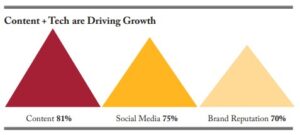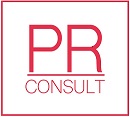This month brought us some interesting conversation with fellow Public Relations and Communications practitioners from Australia, Malaysia and the United Kingdom about the future of our profession and the skills we will need.
We spoke in terms of leadership, content creation, metrics and being data-driven, but also about the role of technology, like Virtual Reality and Artificial Intelligence, within our industry. So where is our profession headed? Is it possible to be a master of all trades considering the number of hats we already have to wear?
Defining Communications
“Everything you do or say is Public Relations.” – Unknown
The quote above is essentially why it is difficult for Communications and Public Relations practitioners to explain our profession succinctly – counterintuitive to our very profession!
Professional communicators have the potential to influence economies and affect lives; we build narratives that help shape ideas and perceptions. As such, our profession has codes of ethics (PR Consult follows IABC’s Code of Ethics) and professional conduct (like the CPRS Code of Professional Standards).
There are clear definitions of our profession but, as with many professions, there are also a variety of areas of expertise within it which most of us have to do within any role. As such, Communications tends to be an umbrella term that defines what we do, from an integrated function to the marketing team, others have worked as strictly the media relations person for an organization, while others have played a strategic role in the overall Communications function of their companies. The truth is – we have all had to wear these hats, plus take on a few more roles that we never thought was part of our job description.
Personally, I have worked on everything from writing speeches for C-suite executives at global events, to creating regional strategies, to writing Tweets and Facebook posts to pitching media to developing key messages to supporting local events. In my almost 20 years in the field of Communications, I have run the gamut of roles and responsibilities.
And yet, our value is often overlooked despite touching every aspect of an organization.
Imagine what your organization would look like without being able to communicate with your customers, colleagues or partners? Surely, you would (or have) found a way, but a Communications person helps organizations build the main messages around what you want to accomplish – with the right words, tone and consistency using ethics and code of conduct as a guiding light.
The pandemic did a lot for our profession by casting a light on the power of communication for change, adjustment, encouragement and empowerment.
What About The Future?
The future of PR is looking interesting. The COVID crisis has helped organizations and individuals understand the value of Communications – not only in what we communicate but how we do it. As professionals, we hope this value is further understood and grown.
According to a recent USC Annenberg Study, PR agency leaders predict the overall agency business will grow 33% from its current size (estimated at $14 billion by The Holmes Report) over the next five years, leading to a 26% increase in headcount. Corporate leaders also expect budget growth of 11% over the next five years.

Image: USC Annenberg Global Communications Report
Both agencies and corporations agree that driving that growth for PR is centred around content creation (81%), social media (75%), brand reputation (70%), followed by measurement and evaluation (60%). Traditional media relations also ranked high for both corporate and agency leaders (55%).
When it comes to skills for PR practitioners, writing ranked as more critical than strategic planning (84%), followed by social media expertise (76%), multimedia content development (76%), business literacy (62%), analytics (62%), research (48%), search engine optimization (41%) and behavioural science (32%).
The Future is Data
From the skills above, analytics ranks as only the sixth top skill to have for up and coming PR practitioners. I would rank that skill as much higher on the scale and needs to be further incorporated into new PR or Business Communications curricula.
Communications practitioners are often tasked with wordsmithing and presenting the company in the best light. In order to do those things, however, we need to be able to anticipate, prepare and measure our activities using data.
Data already allows us to understand what content is best received by our audiences and can further enhance that creativity by focusing resources on messaging opportunities of the highest potential. Data gives us content to write our stories and emphasize our messages. Data allows us to see surges in customer dissatisfaction and stay ahead of an impending issue. Data allows us to decipher what people need and want from our organizations. We are already using data to help protect organizations and amplify their messages.
Communication professionals need to expand their hats to also become data scientists. We need to continue to find new ways to create meanings, connections and patterns out of data. According to “IRREVERSIBLE: The Public Relations Big Data Revolution” from the Institute for Public Relations, Big Data allows us to 1) ensure continuous improvement, and 2) prove the value of PR.
“Just as in other research-based applications, the purpose of measurement and evaluation is to apply what one learns to improve performance over time, versus competitors and in light of objectives. Big Data PR results enable PR to improve across a broader platform and to connect those improvements to other areas of the business.”
In terms of demonstrating the value of PR, “Big Data PR results enable the practitioner to demonstrate the unique effect PR has on the business overall. Once PR demonstrates its ability to positively influence the business overall on those factors which drive the bottom-line (sales, cost, pricing, staffing, regulatory action, etc.), the greater PR’s esteem will be.”
As such, it is time to change our own mentality around Business Communicators being spin doctors or making things sound pretty. We are an integral part of business and must participate in business strategy to build a deliberate use of language through data science. This will help us grow our relevance and become recognized as drivers of business.



Glad you found it useful, Paul. Have a great day.